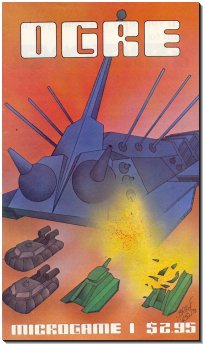
OGRE is a science fiction board wargame designed by the American game designer Steve Jackson and published by Metagaming Concepts in 1977 as the first microgame in its MicroGame line. When Steve Jackson left Metagaming to form his own company, he took the rights to OGRE with him, and all subsequent editions have been produced by Steve Jackson Games (SJG).

G.E.V. is a science fiction board wargame that simulates combat in the near future between supertanks and other futuristic weaponry. The game was designed by American game designer Steve Jackson as a sequel to his Ogre board game when he was working for Metagaming Concepts. When Jackson left Metagaming to form his own company, he took the rights to both G.E.V. and Ogre with him, and all subsequent editions have been produced by Steve Jackson Games.

White Bear and Red Moon is a fantasy board wargame set in the world of Glorantha, created by Greg Stafford and published in 1975. Stafford first tried to sell the game to established publishers, but despite being accepted by three different game companies, each attempt ended in failure; eventually he founded his own game company in 1974, the influential Chaosium, to produce and market the game.

Triplanetary is a science fiction board wargame originally published by Game Designers' Workshop in 1973. The game is a simulation of space ship travel and combat within the Solar System in the early 21st Century.
Metagaming Concepts, later known simply as Metagaming, was a company that published board games from 1974 to 1983. It was founded and owned by Howard Thompson, who designed the company's first game, Stellar Conquest. The company also invented Microgames and published Steve Jackson's first designs, including Ogre, G.E.V. and The Fantasy Trip.

Hitler's War is a strategic level World War II war game for 2 or 3 players, first published by Metagaming Concepts in 1981, and then by Avalon Hill in 1984.
Howard M. Thompson is an American wargame designer and founder of Metagaming Concepts. His first game was Stellar Conquest, a popular and well-designed simulation of interstellar warfare.

Stellar Conquest is a science fiction board game published by Metagaming Concepts in 1974.

The Ythri is a board wargame published by Metagaming Concepts in 1975 that is based on the 1973 science fiction novel The People of the Wind by Poul Anderson.

Outreach, subtitled "The Conquest of the Galaxy, 3000 AD", is a science fiction board wargame published by SPI in 1976 that simulates galactic empire building.
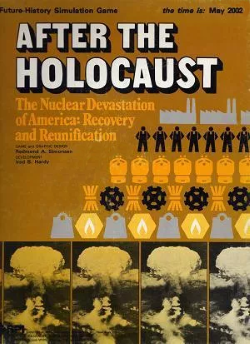
After the Holocaust, subtitled "The Nuclear Devastation of America: Recovery and Reunification", is a near-future board wargame published by Simulations Publications, Inc. (SPI) in 1976 that simulates the economic recovery of the United States following a nuclear war. The game was the third and last in SPI's "Power Politics" series.

Chitin: I is a science fiction microgame published by Metagaming Concepts in 1977 in which bands of intelligent insects vie for resources.
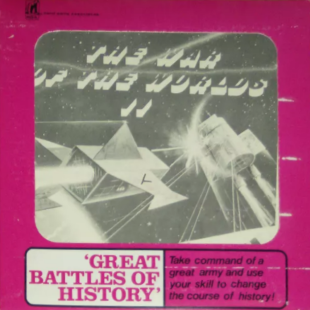
The War of the Worlds II is a science fiction board wargame for 2-3 players designed by Phil Orbanes Sr. and published by Rand Game Associates in 1974 that simulates planetary conquest. In the year 2000, each player's race has simultaneously arrived at the Altair system, which contains five uninhabited resource-rich planets. The players fight for the right to own the most planets.
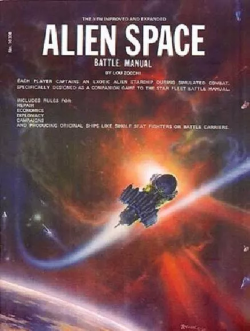
Alien Space is a science fiction board wargame published by Gamescience in 1973 that simulates space combat as seen in the Star Trek television show.

Bloodtree Rebellion, subtitled "Guerilla Warfare on the Planet Somber", is a science fiction board wargame published by Game Designers' Workshop (GDW) in 1979. The game started as a guierilla wargame based on the Vietnam War, but was changed to a science fiction theme due to the social and political divide over the war in the United States.

Annihilator & One World are two board wargames released in one package by Metagaming Concepts in 1979 as the 14th addition to its MicroGame line.

Holy War is a science fiction board wargame published by Metagaming Concepts in 1979 in which two groups battle each other inside a pocket universe.

Black Hole is a science fiction board wargame published by Metagaming Concepts in 1978 as part of its MicroGame line.
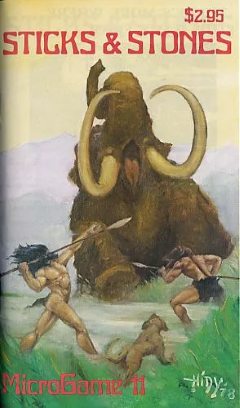
Sticks & Stones is a board wargame published by Metagaming Concepts in 1978 that is set in the Neolithic Age.

WorldKiller: The Game of Planetary Assault is a science fiction board wargame published by Simulations Publications Inc. (SPI) in 1980 that simulates humans in the far future defending a planet against an alien attack.



















